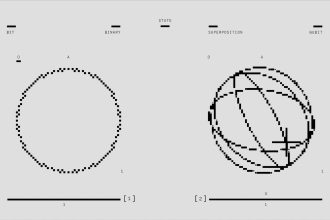superconductive neural networks
Superconductive Neural Networks: The Future of AI Speed
Imagine artificial intelligence that learns and processes information at speeds previously unimaginable, consuming a fraction of the power. This isn’t science fiction; it’s the burgeoning reality of superconductive neural networks. Researchers are pushing the boundaries of what’s possible, developing groundbreaking devices that promise to revolutionize AI computation. This advancement could unlock unprecedented capabilities in fields ranging from complex scientific simulations to real-time decision-making systems.
Unlocking Next-Gen AI with Superconductivity
The core of this innovation lies in harnessing the unique properties of superconductive materials. Unlike traditional electronic components that generate heat and resistance, superconductive materials allow electricity to flow with zero resistance below a critical temperature. This fundamental difference is key to achieving both extreme speed and ultra-low power consumption in computing architectures.
The Challenge of Traditional AI Hardware
Current AI systems, while powerful, are constrained by the physical limitations of silicon-based transistors. Heat dissipation is a major bottleneck, limiting clock speeds and requiring substantial energy input. As AI models grow in complexity and the demand for real-time processing increases, these limitations become increasingly problematic.
How Superconductive Devices Change the Game
By utilizing superconductive phenomena, researchers are creating novel “neuron” devices. These devices mimic the basic functions of biological neurons but operate at significantly higher speeds and with dramatically reduced energy expenditure. This breakthrough paves the way for entirely new types of neural network designs that can process vast datasets almost instantaneously.
The implications are far-reaching:
- Massively accelerated training times for deep learning models.
- The development of AI systems capable of complex, real-time analysis in critical applications.
- Reduced energy footprints for large-scale data centers and AI infrastructure.
- Enabling AI at the edge, in devices with limited power budgets.
The Science Behind Superconductive Neuron Devices
At the heart of this technological leap are specialized superconductive materials. Researchers are exploring various compounds and fabrication techniques to create stable and efficient superconductive elements that can perform logical operations. These elements are designed to emulate synaptic connections and neuronal firing, the fundamental building blocks of neural networks.
Key Technological Hurdles and Solutions
Developing these devices involves overcoming significant scientific and engineering challenges. Maintaining superconductivity often requires extremely low temperatures, which can be complex and costly to achieve. However, ongoing research is focused on:
- Discovering and optimizing high-temperature superconductive materials.
- Developing robust fabrication processes for nanoscale superconductive components.
- Designing circuit architectures that effectively leverage superconductive properties for neural computations.
Potential Applications and Future Outlook
The potential applications for such advanced AI hardware are immense. We could see breakthroughs in:
- Drug Discovery and Materials Science: Simulating molecular interactions at unprecedented speeds.
- Autonomous Systems: Enabling faster, more reliable decision-making in self-driving vehicles and robotics.
- Financial Modeling: Performing complex risk analyses and market predictions in real-time.
- Scientific Research: Accelerating simulations for climate modeling, astrophysics, and particle physics.
This is a rapidly evolving field, with continuous advancements promising to bring superconductive neural networks from the lab to practical applications in the coming years. For a deeper dive into the principles of superconductivity, explore resources like the Nobel Prize in Physics 1972. Further insights into the architecture of neural networks can be found at TensorFlow’s guide to computational graphs.
Conclusion: A New Era for Artificial Intelligence
The development of superconductive neuron devices marks a pivotal moment in the quest for more powerful and efficient artificial intelligence. By overcoming the limitations of traditional computing, these innovations promise to unlock new frontiers in AI capabilities, driving progress across a multitude of scientific and technological domains. The future of AI is not just about smarter algorithms, but also about the underlying hardware that makes them possible.
future of AI, superconductive computing, neural network hardware, AI speed, low-power AI, advanced computing
superconductive neuron device, high-speed AI, ultra-low-power AI, superconductive neural networks, AI hardware innovation, next-generation AI
Groundbreaking superconductive neuron devices are poised to revolutionize AI, enabling unprecedented speed and ultra-low power consumption for future neural networks. Discover how this technology works and its potential impact.
superconductive neuron, artificial intelligence hardware, AI speed breakthrough, low power computing, neural network technology, advanced AI research, superconductivity in computing
superconductive neuron device, high-speed neural network, ultra-low-power AI, superconductive AI hardware, future of artificial intelligence, AI research, advanced computing technology





